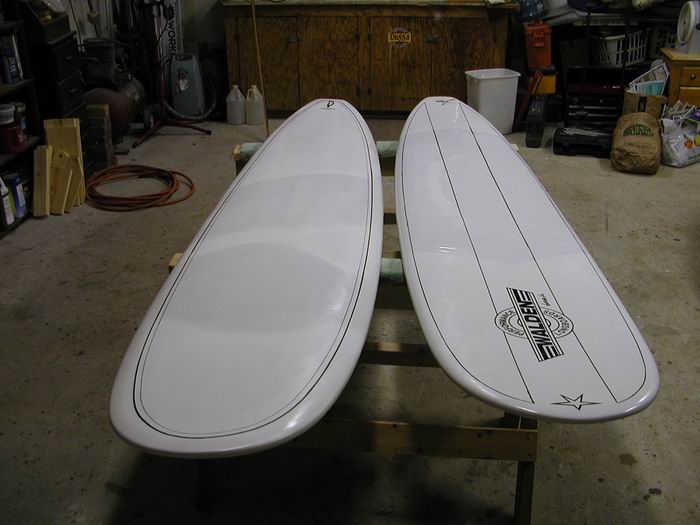
|
Here they are, ready to surf. The 9'6" on the left came out about
3/4 lb lighter than the 9'0" on the right (which was repaired three
times). Both boards feel extremely light in the water.
I don't recommend that you attempt major repairs like you will see
on these pages unless you are very patient, good with tools, and experienced
with less drastic board repairs. Also, if you break or buckle a Boardworks,
Surftech, or other thermally laminated board such as these, and wish
to have it professionally repaired, I highly recommend that you have
a serious conversation about repair techniques with the folks you chose
to fix your board. Epoxy boards like these are already quite rigid.
If extensive damage to one of these types of boards is repaired using
the methods that have been used for polyester surfboards since the 1960's,
there is a significant probability you will not be happy with what
you get back. A large quantity of resin/microballoon filler is going
to add too much weight and too much rigidity. The 16.5 pound board featured
in this article weighed less than 17 pounds when completed. It is now
my favorite longboard (and I have a bunch of them). By limiting cloth
overlap and not wrapping the board with bands of cloth as is usually
done, I am taking a chance that the board will break again. However,
that is the trade off. I just don't care for rigid heavy boards.
One month later I broke it again just in front of the top deck patch.
A tapered diamond shaped patch may have prevented this.
|
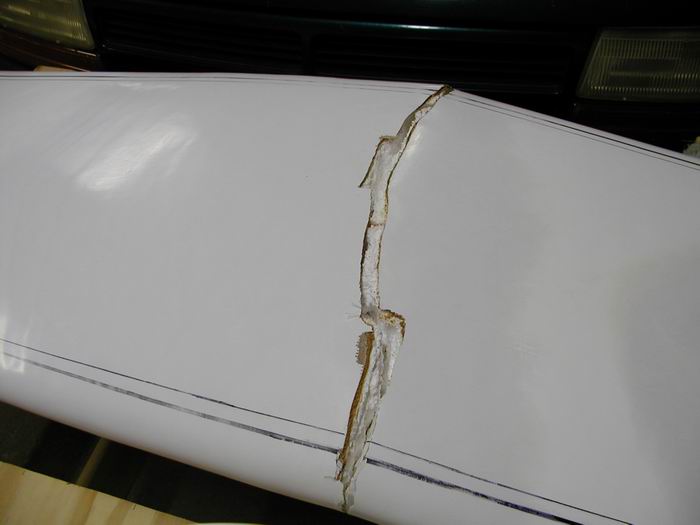
|
And here it is, one more time. It has now been broken in half four
times and the mid-deck is a continuous patch except for about 6 inches
between the the mid and forward patches. If it breaks again, this will
be the place. I used diamond shaped patches this time. I won't fix this
board again. It now weighs 17.5 to 18 lbs and still has lots of flex.
For a big board like this that isn't bad. I think the board sat for
too long with water in it and the main deck has separated from the
core foam. It feels spongy.
For the type of waves we get here in Central Florida most of the time,
this board is perfect for my 200 lb body weight. If it breaks again,
I am going to get a NEW one. It's a Boardworks Bruce Jones model 9'6".
The blue nose is misted spray paint with clear coat to seal it. It was
just too boring being all white. They now put internal stringers in
these boards, and I am told this has significantly increased the strength.
|
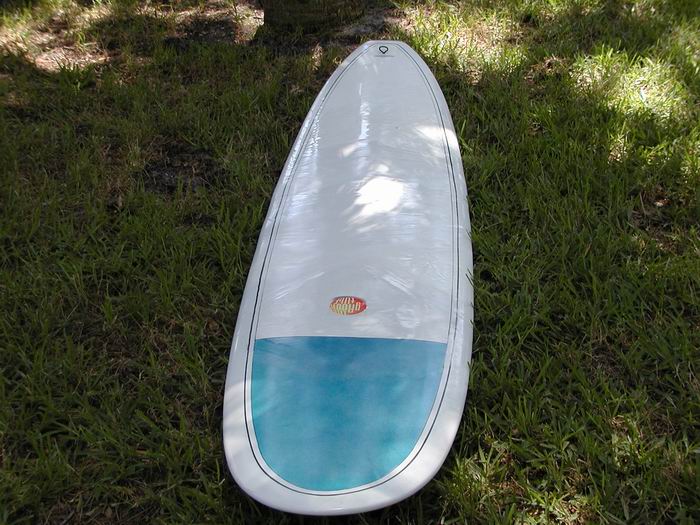
|
Here it is (above) all nice and shiny new, except for four breaks.
With fins, it weighs 17.5 lbs. For a 9'6" board that is 3"
thick, that is not bad at all. There is still a 6" section that
has not been patched. In the next pic below, you can see break number
5 ran right slam through the middle of that unpatched section.
|
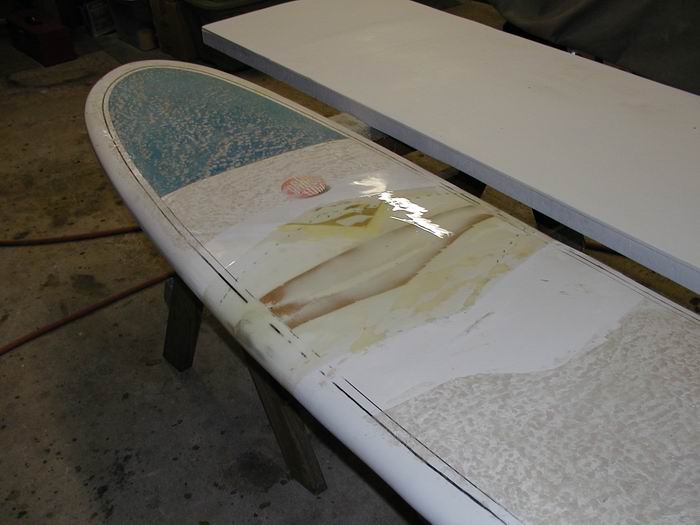
|
Jan 20, 2005 - Break Number 5. That's it! It is now a solid patch from
about 24 inches down from the nose to about 24 inches up from the tail.
I haven't weighed it yet, but my guess is that I added less than a pound
for this patch. So now it weighs about the same as a new polyester board
this same size. It still feels good, but I won't know if it will still
ride well until I try it. If it breaks again, I am going to buy a new
one just like it. Oh, is that what I said after the third break? The
day it broke was the day that about 20 boards got eaten at 2nd Light.
It was a real nice day, but that new sand bar is a real board killer.
|
BREAK NUMBER SIX
Five Years Later - January 18, 2010... see below
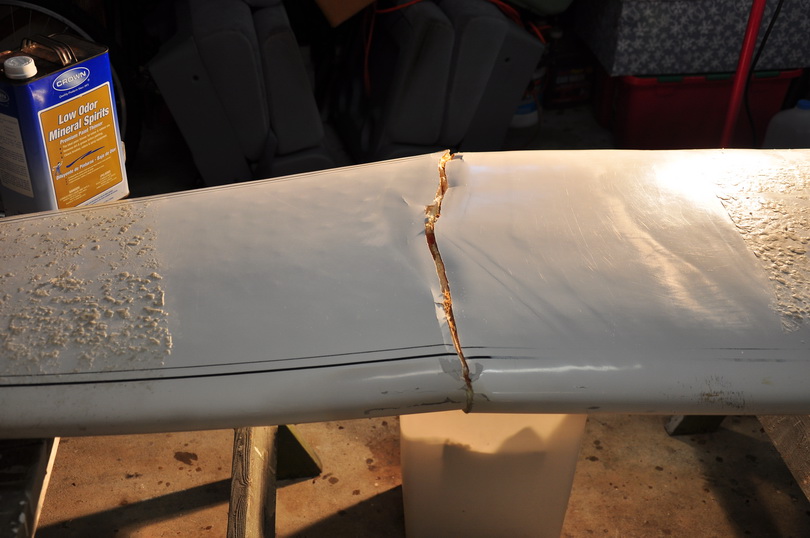
Another break! Just behind a previous patch!!! I have NEVER had a board break twice in the same place.
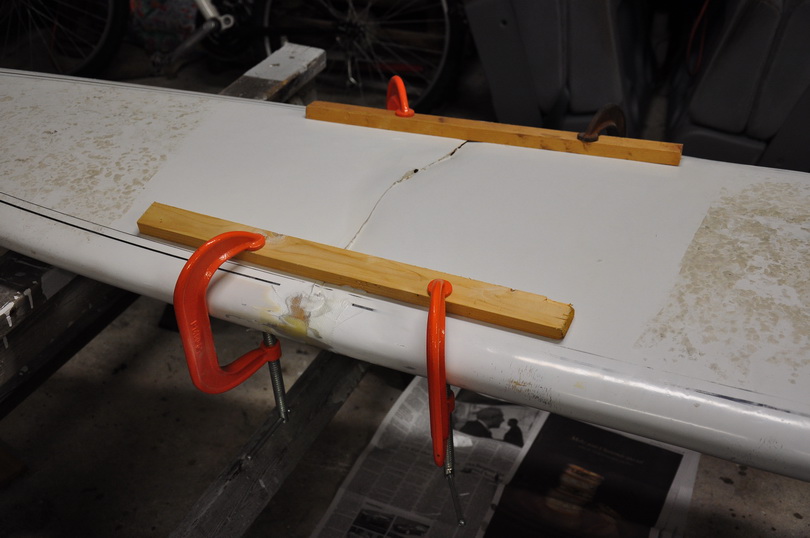
The bottom deck was still attached. The wood splints and clamps pull the rails up to match and make alignment pretty easy.
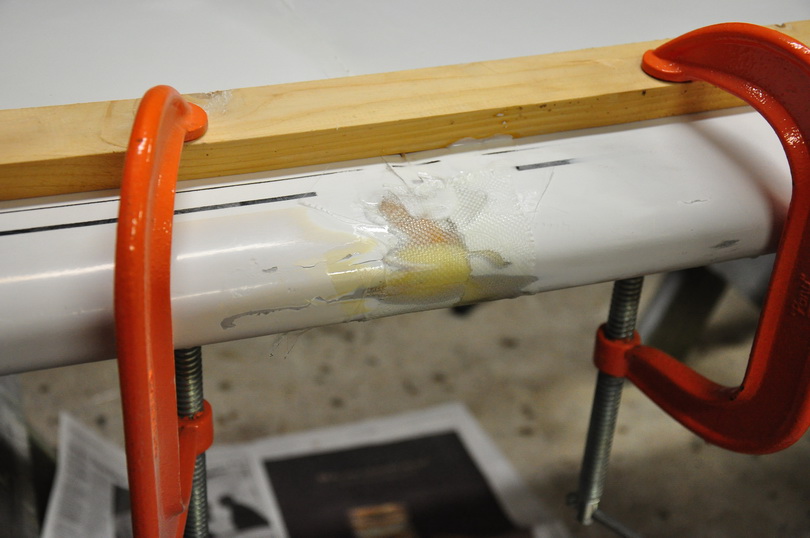
As usually for me, I tacked the two parts together with a temporary patch using 2 layers of heavy cloth.
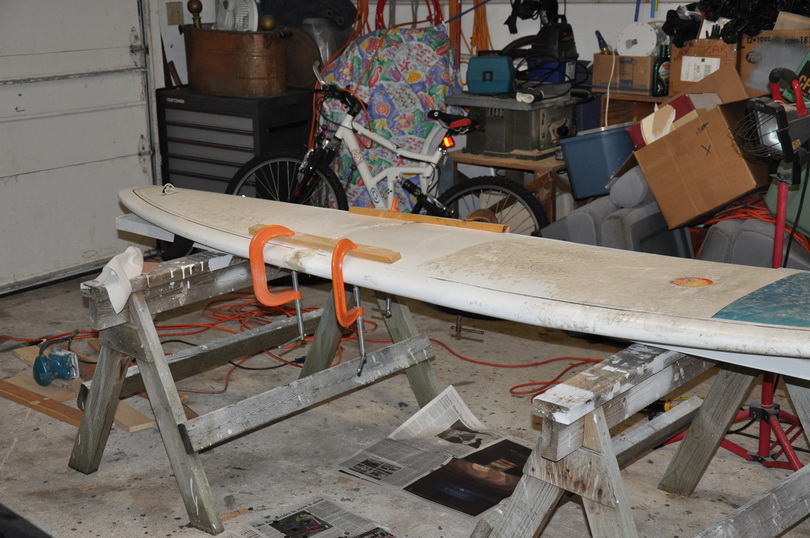
Good alignment is critical.
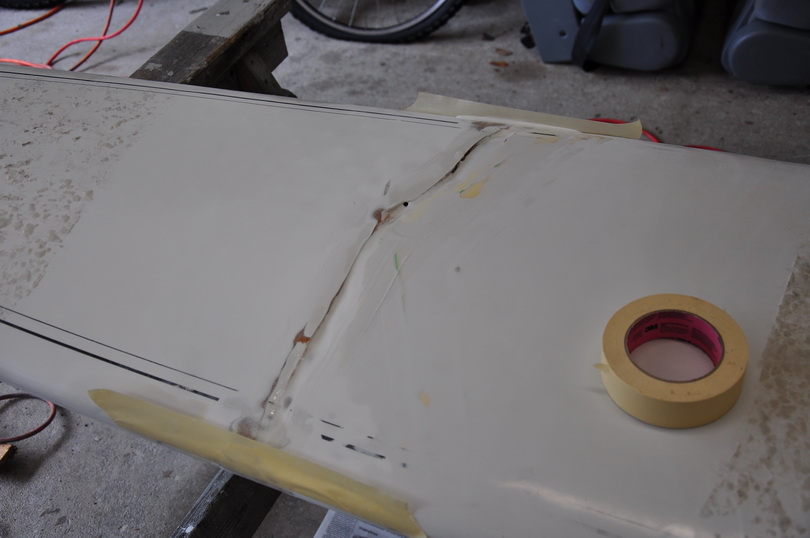
After alignment, the temporary rail patches hold the board together while I fill the crack and build up the deck to be flush.
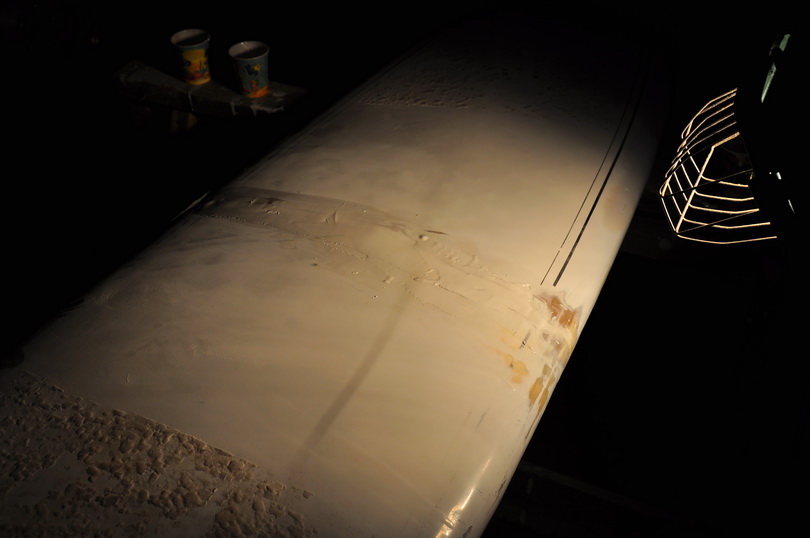
It takes several applications of a thick mixture of resin and white fiberglass filler.

I laminated with 2 layers of 4 oz cloth on the deck and one layer on the bottom since the bottom didn't get broken.
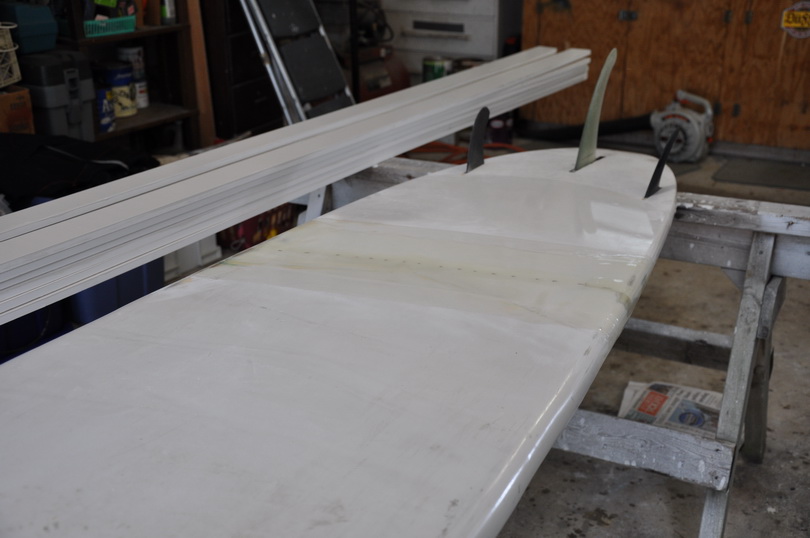
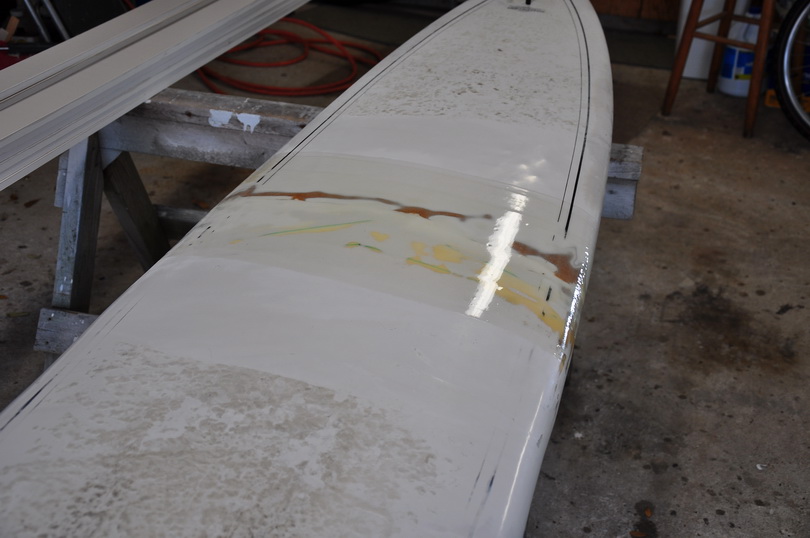
Here it is, all ready for sanding and painting. Will it break again? Yes. Right behind this patch but in front of the fins.
The deck is just too soft. I can tell the deck has separated from the foam core. This was the problem all along. The board was
left outside in the weather for a year after it broke the first time and just got totally soaked on the inside. But it became a real
nice learner board and launched the surfing career of several new longboarders. I will not fix it the 7th time!!!!!!
Please... whoever breaks it next, just take the fins off and leave it in the nearest dumpster for someone else to fix up for a learner.
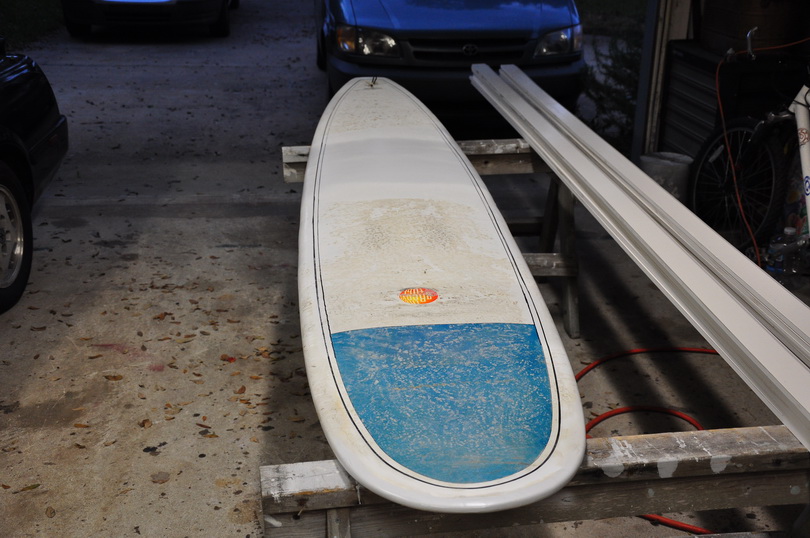
ALL DONE!!! Ready to ride. Jan 24, 2010.
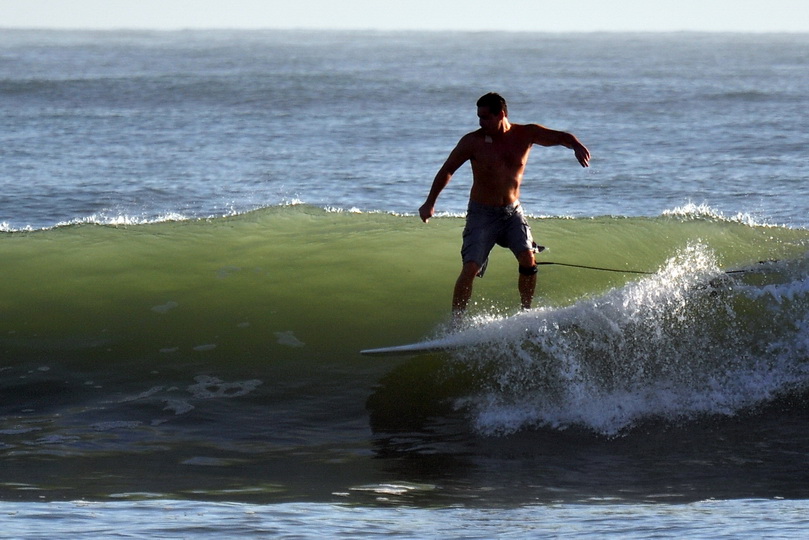
The LAST WAVE!!! Oct. 31, 2010. About one minute after this shot was taken that big line you see building on the horizon
caught the board paddling back out in the wrong spot and snapped the deck.
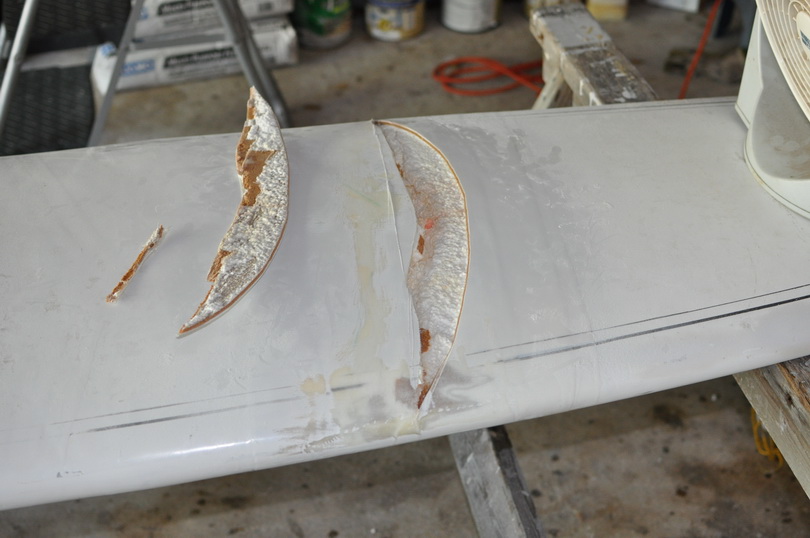
So here we have BREAK #7 !!! (I told him not to use it in big surf). This break was just a little bit aft of a previous break.

Only the top and rails were broken. The bottom still looked good. I used the clamps and splints to assure good alignment.
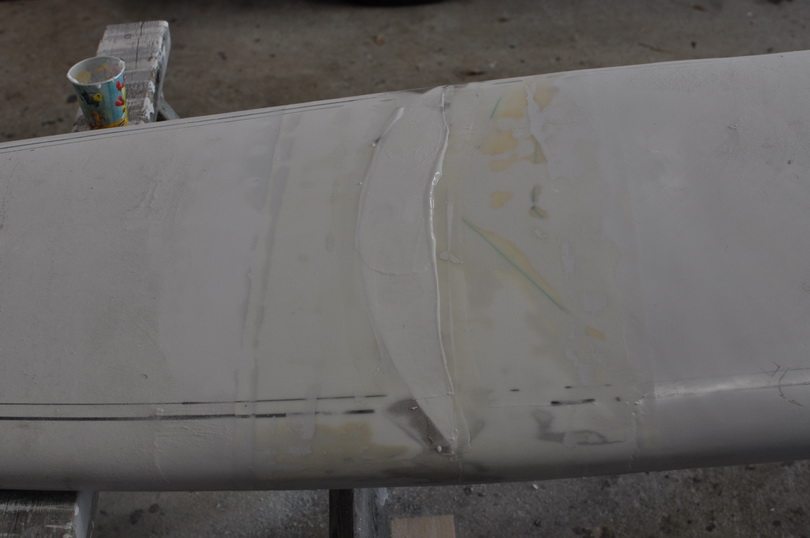
I kept dumping mixtures of white power glass with epoxy until the filler was built up above the original deck so it could be sanded flush.
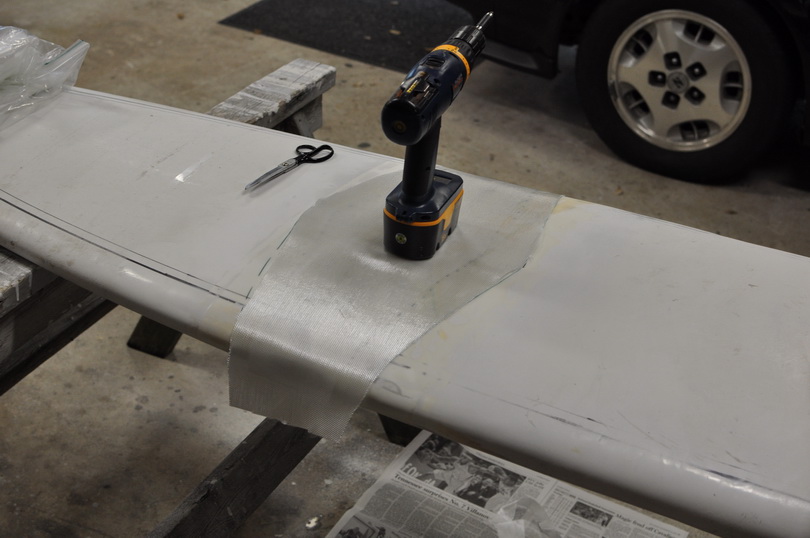
As always, I cut the glass cloth into a diamond shape. A weight (the drill) keeps the cloth from slipping out of place while I trim it.
The green lines are just to help guide the cuts. Since I am going to paint it, the green doesn't matter. You would not want to mark it
like this for a clear finish that won't get painted.
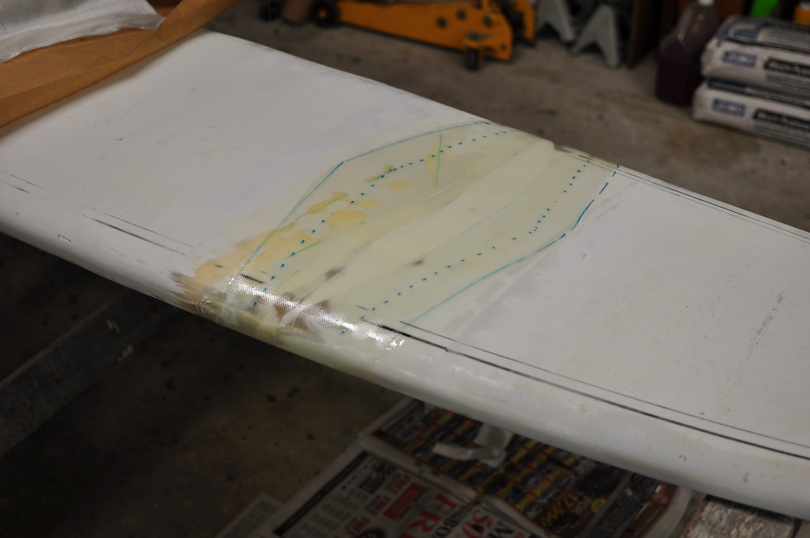
All laminated! Next it gets a nice heavy layer of resin for the final sanding coat.

Dec 10, 2010 - ALL DONE for the last time!!! After a little sanding and painting it is ready to ride again. It now weighs close to 20 lbs
(up 4 lbs from its brand new weight of 16 lbs). I gave it to some small kids to use as a learner board. It is still a little soft between the
newest patch and an older patch and will probably break again just in front of the new patch if used in big waves.
CFLsurf Home Page
|| About this Site
|| Photo Galleries
|| Surf the Web ||
Return to Repair Series
Page